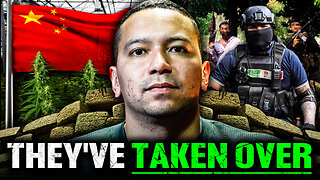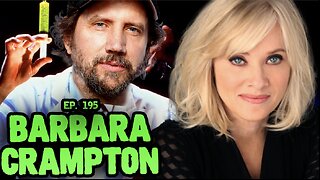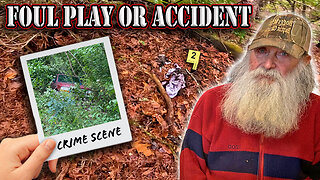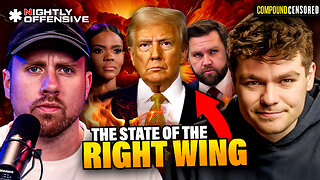Premium Only Content

Shoot To Kill 1947 Film Noir
Get instant answers about this film at:
https://poe.com/Film_Noir_Now
Freebies for watching: https://digitalprofits7.com/free
In this taut police procedural noir, a dedicated detective becomes entangled in a complex murder investigation that reveals the dark underbelly of urban crime, challenging his professional integrity and personal moral code.
Key Cast:
Preston Foster as Detective Steve Randall
Peggy Converse as Mary Dexter
Robert Wilcox as Jim Crane
Detailed Analysis:
"Shoot to Kill" represents a quintessential mid-1940s noir that blends hard-boiled detective work with psychological tension. The film follows Detective Steve Randall as he investigates a series of murders that point to a larger criminal conspiracy. Unlike many noirs that focus exclusively on private investigators, this film provides an insider's view of police methodology, showing the procedural aspects of crime-solving with gritty realism.
Cinematography and Visual Style:
The film employs classic noir visual techniques - stark lighting with pronounced shadows, low-angle shots that create psychological tension, and urban environments that feel claustrophobic and morally ambiguous. The black-and-white cinematography emphasizes moral gray areas, a hallmark of the noir genre.
Thematic Exploration:
Central themes include institutional corruption, the thin line between law enforcement and criminality, and the psychological toll of relentless detective work. The protagonist's journey reveals how seemingly straightforward investigations can unravel complex webs of deceit.
Critical Reception:
While not as renowned as some contemporary noir classics, "Shoot to Kill" was praised for its tight narrative and authentic portrayal of police work. It represents a period when Hollywood was exploring more nuanced representations of law enforcement beyond simplistic good-versus-evil narratives.
Why It's Worth Watching:
For noir enthusiasts, the film offers a compelling look at the genre's evolution, showcasing how police procedurals integrated noir sensibilities. It's a must-see for those interested in understanding the broader noir landscape beyond private detective stories.
Interesting Note:
The film exemplifies the post-World War II noir trend of bringing more institutional perspectives into crime narratives, reflecting societal changes and growing complexity in understanding criminal behavior.
-
 8:40
8:40
Tundra Tactical
21 hours ago $6.74 earnedThe Executive Order Wishlist.
33.8K3 -
 7:22:52
7:22:52
SpartakusLIVE
20 hours agoSaturday SPARTOON Solos to Start || Duos w/ StevieT Later
112K2 -
 28:40
28:40
SLS - Street League Skateboarding
8 days agoTOP MOMENTS IN WOMEN’S SLS HISTORY! ALL THE 9’s - Rayssa Leal, Leticia Bufoni, Chloe Covell & more…
80.2K10 -
 2:03:03
2:03:03
The Connect: With Johnny Mitchell
17 hours ago $5.01 earnedHow Mexican & Chinese Cartels Control Illegal Marijuana Cultivation In America Using SLAVE Labor
28.4K6 -
 14:46
14:46
Mrgunsngear
19 hours ago $2.80 earnedPrimary Arms GLx 1x Prism With ACSS Reticle Review
35.8K8 -
 22:37
22:37
Degenerate Plays
18 hours ago $0.55 earnedI'm A Psychic Now - Elden Ring : Part 73
20.7K1 -
 2:32:02
2:32:02
Jamie Kennedy
11 hours agoEp. 195 Horror Legend Barbara Crampton
24.1K1 -
 23:00
23:00
Exploring With Nug
1 day ago $34.16 earnedHis Truck Was Found Crashed in the Woods… But He’s Gone!
149K9 -
 27:09
27:09
MYLUNCHBREAK CHANNEL PAGE
1 day agoDilmun: Where Life Never Ends
113K72 -
 2:58:32
2:58:32
Slightly Offensive
22 hours ago $127.76 earnedHas Trump FAILED US? The ABSOLUTE STATE of The Right Wing | Guest: Nick Fuentes
167K236